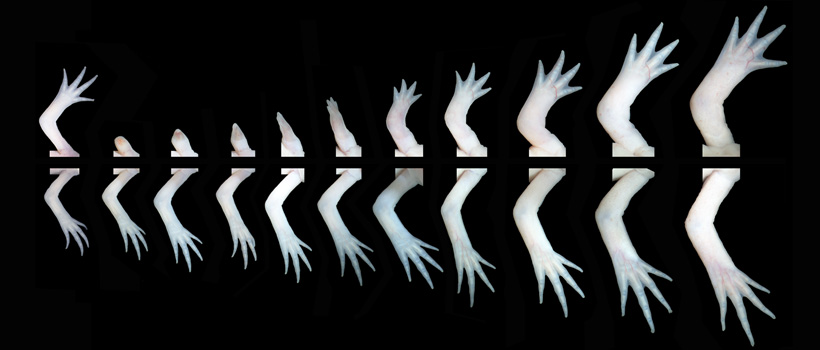- Home
- Mccuskerlab
- Research
Our Research
Cell Communication during Limb Regeneration
Similar to organogenesis in developing embryos, the process of regeneration in adult organisms requires the production of “building blocks” (i.e. different tissues) that are assembled according to a specific "blueprint." Catherine McCusker's lab is interested in understanding the molecular underpinnings of how cells communicate during regeneration, resulting tissues that seamlessly integrate with each other to make a fully functioning biological structure. In particular she wants to determine how connective tissue cells interact with each other to generate the blueprint of the missing structure. She is also interested in how these "pattern forming" connective tissue cells communicate with other cell types to coordinate their assembly into the tissues of the limb.
Cellular Reprogramming during Limb Regeneration
One of the most intriguing aspects of regeneration is that adult cells reinitiate an embryonic-like developmental program. For this to occur, these cells need to lose characteristics of their adult tissue to become the progenitor cells of the regenerating organ, known as blastema cells. This process is loosely called "dedifferentiation," although is has now become clear that the cells are not completely reprogrammed to an embryonic stem cell-like state. Regardless, the molecular processes that are activated in regenerating axolotl cells renders them capable of reorganizing and re-differentiating into the missing adult tissues. The work in this lab focuses on identifying what molecular cues in the regenerative environment activate the process of dedifferentiation, and how these cells are reprogrammed to generate the new structures.
Correct Sizing of the Regenerating Limb

The axolotl limb regenerate goes through multiple stages to make a fully functional replacement of the damaged or missing tissue. The first stage is a developmental stage, where the cellular building blocks of the limb are arranged according to the limb “blueprint.” The second stage involves a period of rapid “catch-up” growth as the regenerated limb structure grows to a size that is functional and proportionally appropriate to the size of the animal it grows on. Very little is known about how this growth is regulated, or how the limb decides to slow its growth once it reaches the correct size. The McCusker lab is pursuing these questions to identify both the molecular and cellular mechanisms underlying this process.
The McCusker Lab